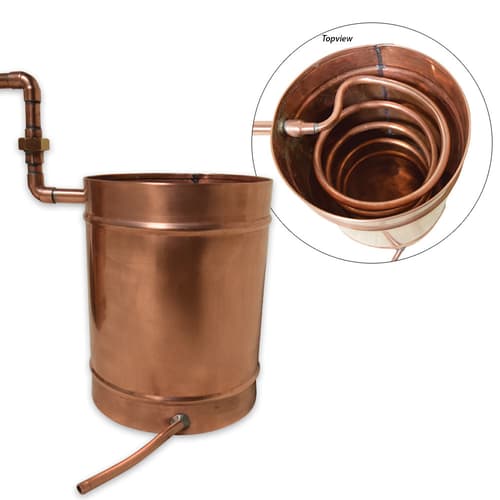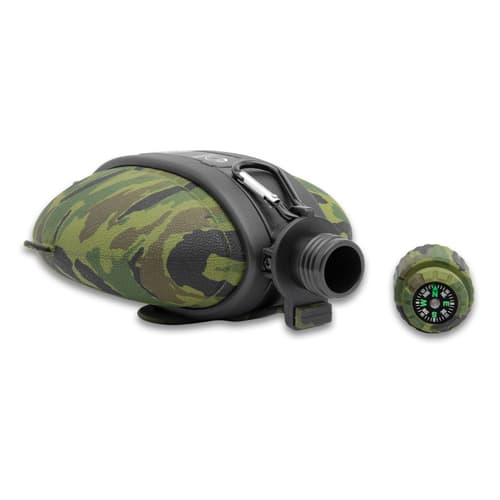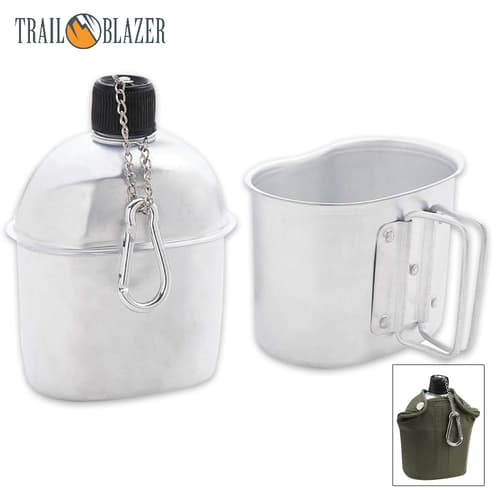Hydration
14 Results
$19.99
46252
Rothco Military Water Purification Powder
USD
5
Rothco
Survival Gear
Hydration
CL2
Category L2
16.99
50377
Membrane Solutions Personal Water Filter Straw - Filters 1500 Liters, BPA-Free Construction - Dimensions 6 7/10”X 1”
USD
6
Chkadels
Survival Gear
Hydration
CL2
Category L2
19.99
50725
Trailblazer Collapsible Water Bottle | 580ml Capacity | Collapses to 1/3 Size | Food-Grade Silicone and ABS | Compass Cap | Carabiner and Belt Loop Included
USD
8
Trailblazer
Survival Gear
Hydration
CL2
Category L2
33.99
38314
Trailblazer Stainless Steel Mug | 7 1/4 fl oz Capacity | Food-Grade Stainless Steel | Double-Wall Insulated | 8 cm Carabiner Handle
USD
10
Trailblazer
Survival Gear
CL2
Category L2
12.99
HYDRATION FAQS
- Why is getting water the first thing to do in a survival situation?
When out in the wilderness, either by choice or chance, the one thing that will kill an individual, without question, no ifs, ands or buts, is dehydration. Dehydration will happen in about three days if no water is consumed. - How do I get water in a survival situation?
Water can be found or collected and then filtered and chemically purified or boiled to make it safe for consumption. Taking stock of what assets are available is the first order of business. Is there a container handy, like a plastic water or soda bottle? Is there a piece of plastic like a garbage bag or grocery bag and cord or string available? Are there means to start a fire and a container to boil water in? - Where do I find water?
When looking for water, stand still to listen for indications that there is water in the area and always head downhill because run-off water collects in low-lying areas. Swarming insects and the direction birds are flying in the morning or evening can also be a good indicator. Places where animal tracks cross are a sign that there could be a common watering hole in the area. In the forest, look for damp patches of earth or mud and dig down about a foot, also making the hole a foot in diameter. The water will collect at the bottom of the hole but needs to be filtered and purified before drinking. - How do I filter and purify water?
Filtering water can be done rather easily by straining it through a piece of cloth like a shirt or bandana. The best non-chemical way to purify water is by boiling it for at least ten minutes. There are two good chemical ways to purify water and that is with commercial purifying tablets or powders and household bleach - eight drops of bleach to one gallon of water. - How do I collect water?
The easiest and most simple way to collect water is through precipitation like rain or snow. Always melt snow before drinking so that it doesn’t lower your body temperature. Dew can also be collected early in the morning where there is a lot of dew-covered foliage. Walk through the area with a shirt wrapped around your legs, then, wring the shirt directly into your mouth or a container. Transpiration is a water collection method in which water is basically “sweated” out of foliage using a piece of plastic like a grocery bag or garbage bag and cord or string. Find a leafy branch of foliage, bag it up completely with the plastic and secure tightly with string. Water will transpire from the leaves and drip into the bag. Sources that water are collected from generally do not need to be purified.






































